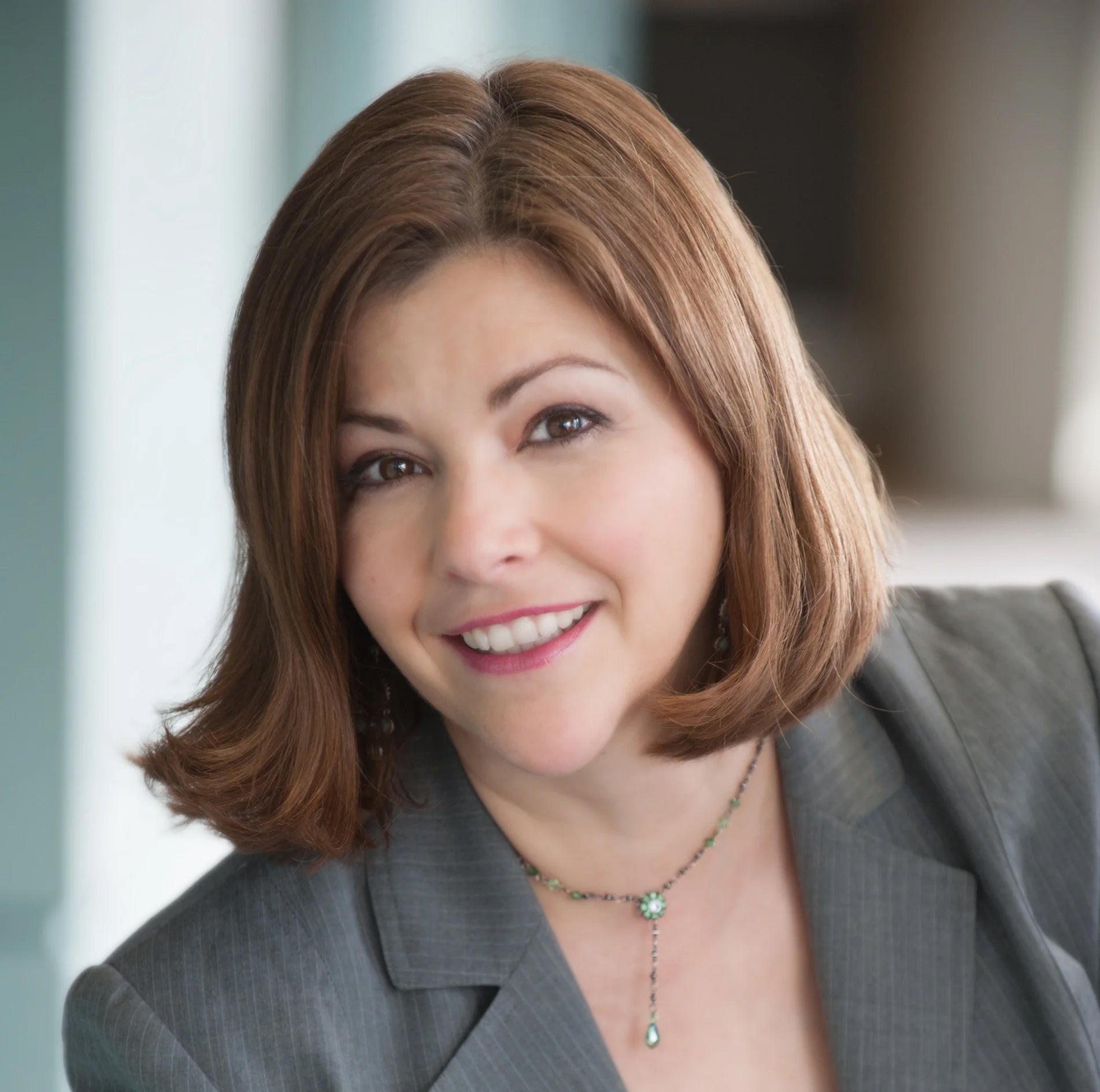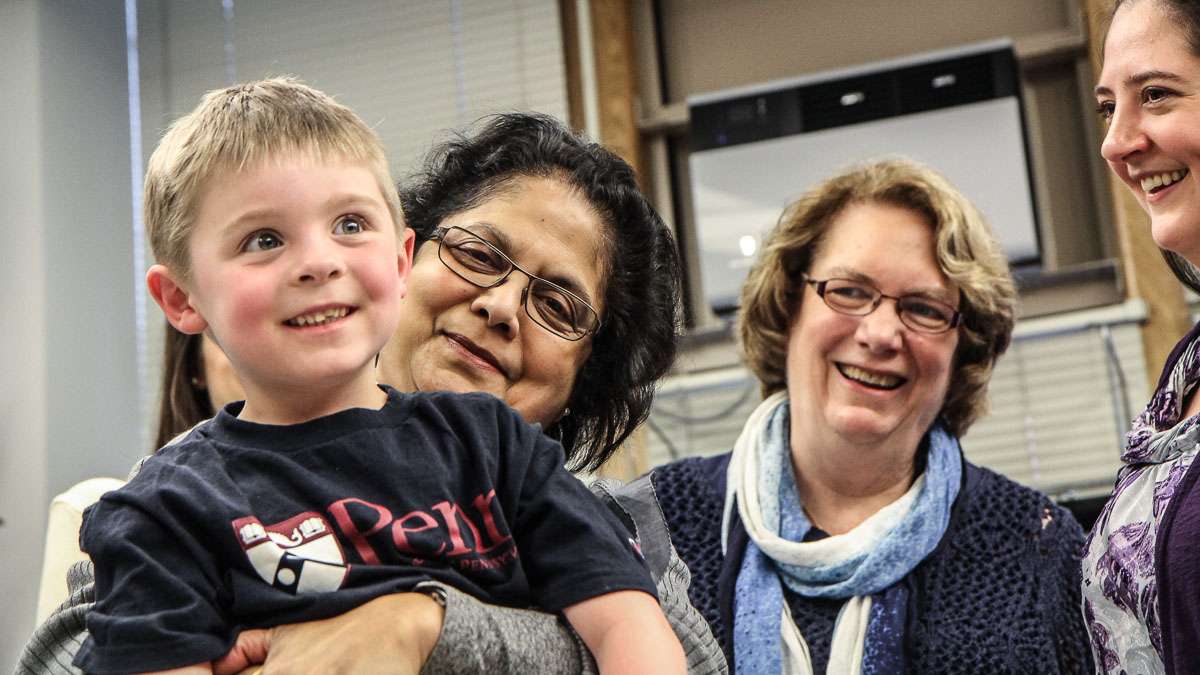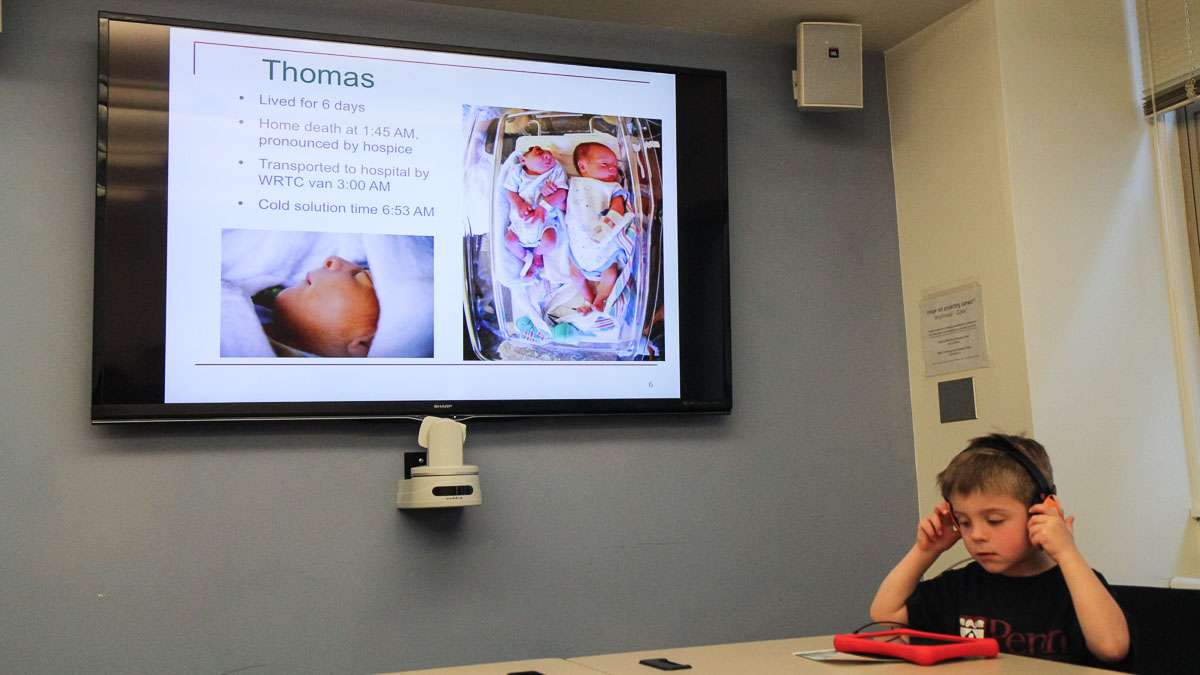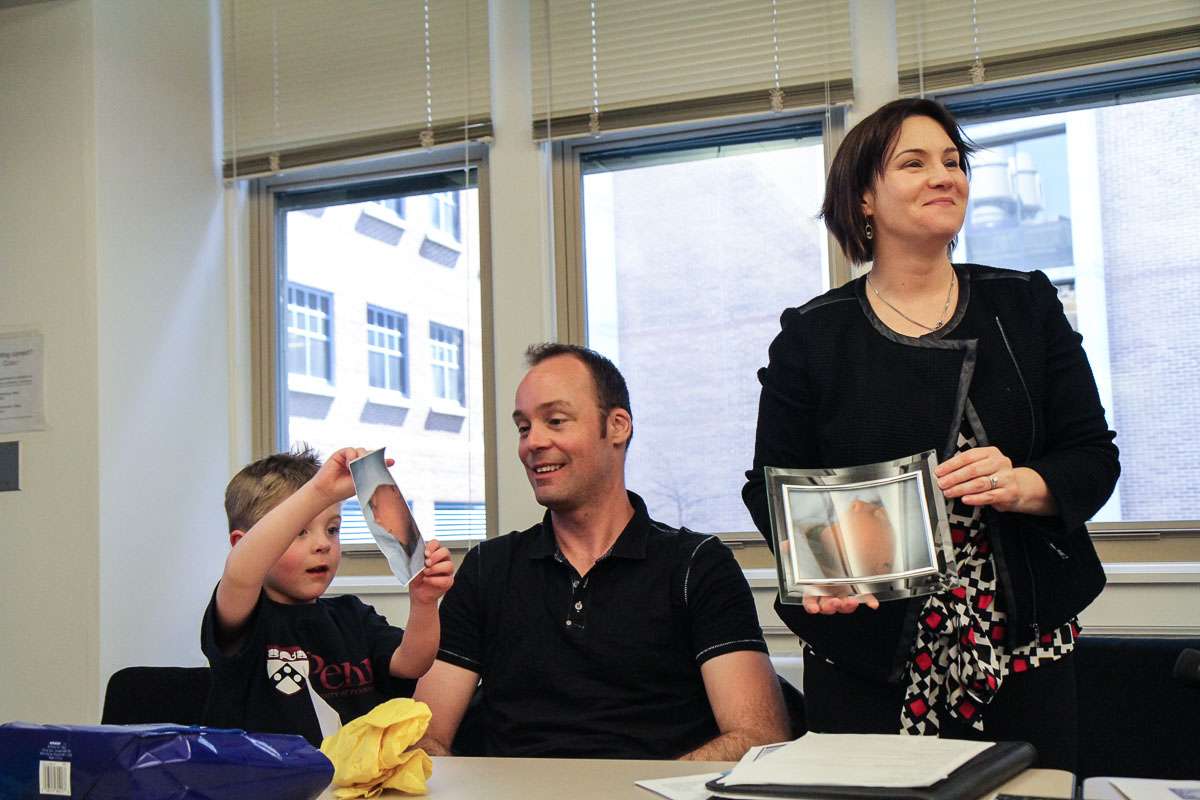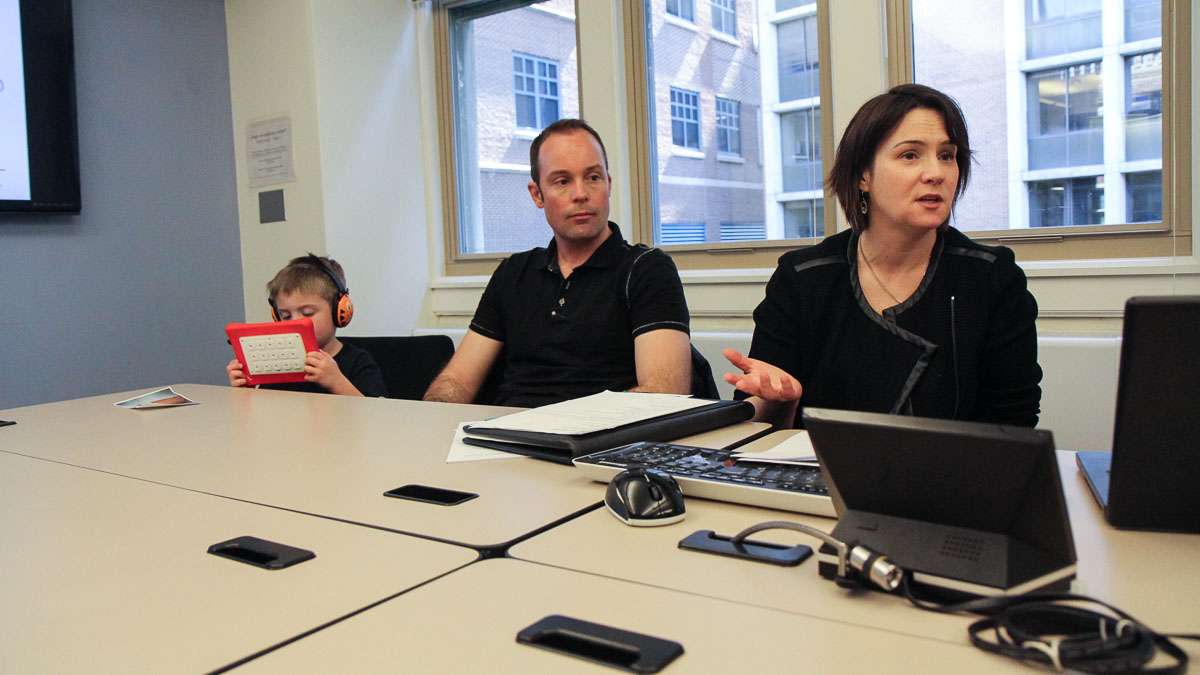Family of retina donor meets researchers at Penn genetics lab
ListenSome donated retinas became a person this week for researchers at the University of Pennsylvania’s Genetics Diagnostics lab. Not literally of course, but the scientists got a chance to meet the family responsible for making the donation, and to learn more about the young donor’s short life.
For the family of the donor — who was just six days old when he died — it was an emotional, but healing experience.
In 2009, Sarah Gray found out during a routine ultrasound that one of the twins she was carrying had anencephaly, a fatal genetic condition where the brain and skull don’t fully develop. Her son Thomas died six days after birth. She and her husband donated Thomas’ organs and tissues and since then, they have been tracking how they’ve been used.
Sarah Gray had prepared a brief presentation for the researchers at the lab. She thanked them for allowing her to come in.
“Were you here in 2010, do you remember Thomas’s tissue coming here?” Gray asked lab manager Jennifer Yutz.
Yutz did remember, and was able to describe the box to Gray.
“I hope you don’t feel guilty about using tissue from a deceased donor,” said Gray to the research group led by Arupa Ganguly. “Share what you learn with the medical community, and share it with us, that would be cool.”
Ganguly directs the genetic diagnostic lab at Penn and studies retina blastoma, and other tumors affecting the eye. She says the Grays are the only family to ever donate a child’s healthy retinas to the lab.
“Tissue has to be collected very quickly, as soon as a child is dead, within four hours, it has to go into a special solution, so it takes very big coordination, that’s why it’s very rare,” she said.
Researchers need the healthy tissue to make comparisons to tissue affected by tumors.
Ganguly took the Grays and their son Callum, the surviving twin, on a tour of the lab, and showed them some of her research findings.
“Thomas Gray became RES-360,” she explained. “This is his sample, and his data, it became part of two presentations.”
In the years since her son’s death, Gray has switched careers and now works for the American Association of Tissue Banks. She says she hopes other families can find out more easily what donated tissues and organs were used for.At the end of the tour, researchers and the Gray family celebrated a special occasion – Callum’s 5th birthday.
WHYY is your source for fact-based, in-depth journalism and information. As a nonprofit organization, we rely on financial support from readers like you. Please give today.


